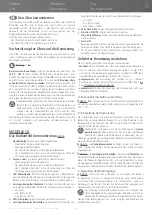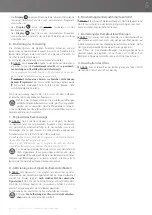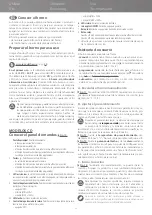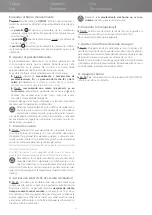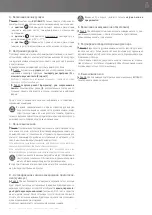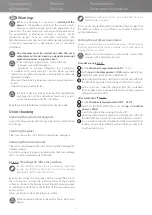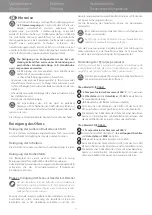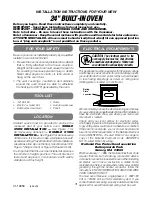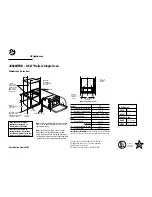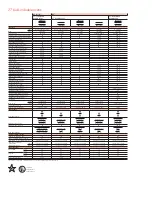
56
Техническое обслуживание
Wartung
Maintenance
Mantenimiento
Entretien
EN
Warnings
Before any cleaning, it is necessary to
switch off the
power
to the appliance (acting on the system switch)
and wear suitable personal protection equipment (e.g.
gloves, etc.). The user must carry out only routine maintenance,
for extraordinary maintenance, contact a Service Centre
requesting service from an authorised technician. The
Manufacturer warranty does not cover damages due to negligent
or incorrect maintenance or cleaning (e.g. use of unsuitable
detergents).
Any cleaning must be carried out with the oven
completely cold and wearing adequate personal
protection devices (e.g. gloves, etc.).
When cleaning any part or accessory do NOT use:
• abrasive or powder detergents;
• aggressive or corrosive detergents (e.g. hydrochloric
or sulphuric acid, caustic soda, etc,). Caution! Never use these
substances also when cleaning the substructure/floor under the
appliance or its base;
• abrasive or sharp tools (e.g. abrasive sponges, scrapers, steel brush-
es, etc.);
• steamed or pressurised water jets.
It is best to have a Service Centre perform maintenance
and inspection on the appliance at least once a year to
ensure top working and safety conditions.
Keep the vents of the electrical compartment clean and clear.
Oven cleaning
Cleaning the external steel parts
Use a cloth dampened with hot soapy water and end with rinsing
and drying.
Cleaning the glass
Clean any glass with a soft cloth and special glass detergent.
Cleaning the control panel
Clean the control panel with a soft cloth and a little detergent for
delicate surfaces.
Avoid also using very aggressive detergents that may damage
the construction material (polycarbonate).
Fig.30.
Cleaning the refractory surface
On the refractory surface, there are normally some food
residues (e.g. fat, food residues, etc.) that must be removed
frequently for health and safety reasons.
Remove the coarser food residues with a natural fibre brush;
then, if necessary, remove the refractory bricks of the cooking
surface as shown in the figure and suck the carbonized residues
accumulated under them on the bottom of the oven with an ash
extraction bin.
Never use liquids to clean the refractory surface.
While reinserting the bricks, be careful not to pinch your
fingers.
Replacement refractory bricks can be obtained from the
Manufacturer on request.
If the use of a natural fibre brush to eliminate food residues from
the refractory surface is not sufficient, see chapter “Setting the
pyrolysis parameters” .
Setting the pyrolysis parameters
Pyrolysis is a thermochemical crystallization process of food residues
that have deposited in the cooking chamber, which takes place by
bringing the oven up to 400°.
Before starting the pyrolysis, remove the coarser food
residues with a natural fibre brus
h.
D model ovens
Fig.31.
A
Set the
chamber temperature to 400°C
- 752°F
;
B
set the
top
and
bottom power
to
100%
see manual settings;
C
switch the lights in the cooking chamber off;
D
when the temperature is reached, switch the oven off with
the ON/OFF key and let it cool down with the door closed;
E
with a cold oven, clean the chamber from the crystallized
food residues using a natural fibre brush and then vacuum
with an ash extraction bin
CD model ovens
Fig.32.
A
Set the
chamber temperature to 400°C - 752°F
,
B
Acting on the “MIN” e “MAX” keys, set the
top
and
bottom
power
to
MAX
,
C
switch the lights in the cooking chamber off;
D
when the temperature is reached, switch the oven off with
the ON/OFF key and let it cool down with the door closed;
E
in a cold oven, clean the chamber from the crystallized food
residues using a natural fibre brush and then vacuum with
an ash extraction bin.
Manutenzione
Содержание Donatello
Страница 1: ...Quick Guide Donatello ПЕЧЬ HORNO OFEN FOUR OVEN FORNO ...
Страница 19: ......
Страница 61: ...Ed 0121 70702533 REV01 Donatello Oven Quick Guide 61 ...




